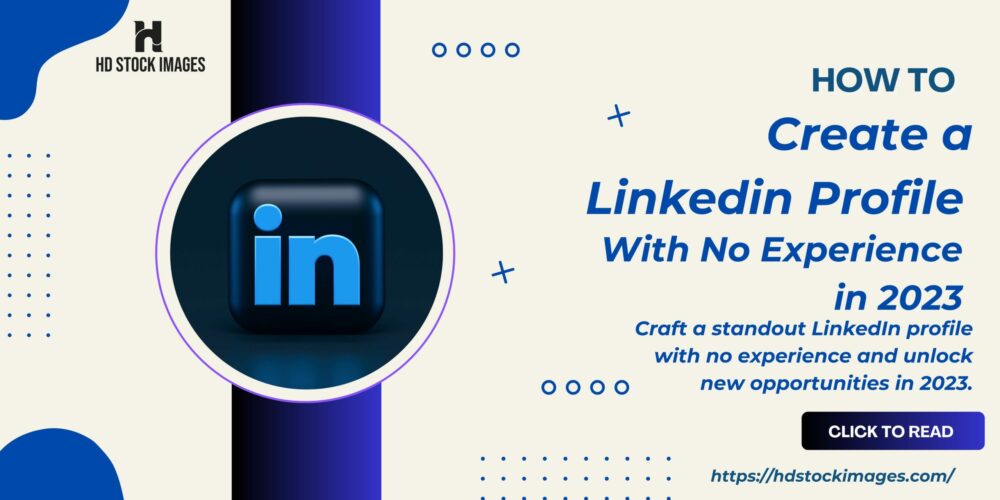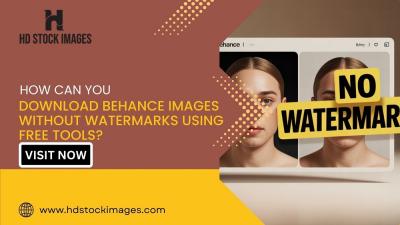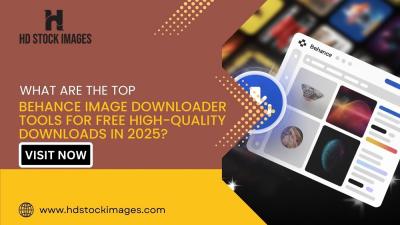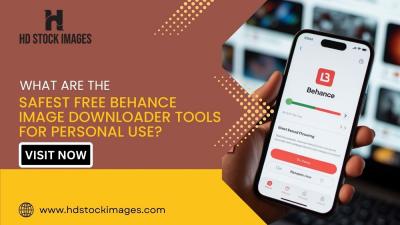1. Introduction
Also Read This: How to Upload Photos to Depositphotos for New Contributors
2. Understanding LinkedIn's Purpose

a) The Professional Networking Platform
LinkedIn serves as an online hub for professionals, allowing them to connect, share insights, and build relationships. It provides a platform for individuals to showcase their expertise, industry knowledge, and career aspirations.b) Job and Career Opportunities
LinkedIn is widely used by recruiters and employers to search for potential candidates. By creating a compelling profile, you can increase your visibility and attract job offers or career advancement opportunities.c) Industry Insights and Learning
LinkedIn offers a wealth of industry-specific content, discussions, and thought leadership articles. By engaging with these resources, you can stay updated on industry trends, expand your knowledge, and demonstrate your passion for your chosen field.d) Building a Professional Brand
LinkedIn allows you to establish and promote your brand. Through your profile, you can highlight your skills, accomplishments, and unique value proposition. A well-crafted profile can differentiate you from others and leave a lasting impression on those who view it.e) Networking and Relationship Building
LinkedIn enables you to connect with professionals in your industry, join relevant groups, and participate in discussions. Building a strong network can lead to valuable connections, mentorship opportunities, collaborations, and potential referrals.By understanding the purpose of LinkedIn, you can tailor your profile to effectively communicate your professional goals, skills, and aspirations. With a clear vision of what LinkedIn offers, you'll be better equipped to create a profile that stands out and makes a lasting impact.Also Read This: How to Cancel Payment in Depositphotos Account
3. Identifying Your Unique Selling Points
a) Self-Reflection
Take the time to reflect on your skills, talents, and qualities. Consider your attributes, such as leadership abilities, strong communication skills, problem-solving capabilities, or creativity. Think about what sets you apart from others and what makes you valuable in a professional context.b) Transferable Skills
Identify the transferable skills you have gained through non-professional experiences, such as volunteering, internships, or involvement in clubs or organizations. These skills could include project management, teamwork, time management, communication, or adaptability. Emphasize how these skills can be applied to a professional setting.c) Personal Projects or Initiatives
Highlight any personal projects or initiatives you have undertaken. This could include building a website, creating a blog, developing a mobile app, or organizing events. Even if these projects were not directly related to your desired career path, they demonstrate your proactive mindset, creativity, and dedication to self-improvement.d) Education and Coursework
If you have pursued relevant coursework or educational programs, include them in your profile. Mention specific courses, projects, or research that are relevant to your desired field. Highlight any academic achievements or honors you have received.e) Extracurricular Activities and Achievements
Include any extracurricular activities or achievements that showcase your skills and commitment. This could be leadership roles in student organizations, awards or recognition received, or any initiatives you have taken that demonstrate your passion and drive.f) Soft Skills and Personal Traits
Don't overlook the importance of soft skills and personal traits. These include qualities like teamwork, problem-solving, adaptability, resilience, and a strong work ethic. Highlight these traits in your profile to showcase your overall character and potential as a professional.g) Seeking Feedback
Reach out to mentors, professors, or colleagues who can provide insight into your strengths and areas of improvement. Their feedback can help you better understand your unique selling points and how to effectively communicate them on your LinkedIn profile.Focus on highlighting your skills, personal projects, educational background, and other relevant achievements to demonstrate your value and potential in the professional world.Also Read This: Training an Image Recognition Model: Key Steps
4. Crafting an Eye-Catching Headline and Summary
a) Headline
Your headline is the first thing people see on your profile, so it needs to be concise, impactful, and highlight your professional identity. Here's how to create an eye-catching headline:- Be specific: Clearly state your area of expertise, industry, or career focus. For example, instead of "Student" or "Recent Graduate," try "Aspiring Marketing Professional" or "Passionate Software Developer."
- Highlight key skills or achievements: Include relevant keywords or phrases that showcase your unique selling points. For instance, "Digital Marketing Strategist | SEO Specialist | Content Creator" or "Software Engineer | Web Developer | Coding Enthusiast."
- Incorporate a touch of personality: Add a personal touch to your headline that reflects your brand or aspirations. For example, "Empowering Businesses through Creative Marketing Solutions" or "Building Innovative Solutions for a Digital Future."
b) Summary
The summary section allows you to provide a brief overview of your background, skills, and career goals. Use these tips to craft an engaging summary:- Start with a hook: Begin your summary with a captivating opening sentence that grabs attention and entices readers to continue. This could be a thought-provoking question, a powerful statement, or a compelling story related to your professional journey.
- Showcase your passion and values: Express your enthusiasm for your field and highlight your values. Explain why you are passionate about what you do and how your work aligns with your personal or professional values.
- Highlight key skills and accomplishments: Summarize your core skills, emphasizing those that are most relevant to your target industry or desired role. Provide specific examples or achievements that demonstrate your expertise and impact.
- Share your career goals: Briefly outline your career aspirations and what you hope to achieve in the future. This shows your ambition and helps others understand your professional direction.
- Be authentic and personable: Write in a conversational tone and let your personality shine through. Showcasing your authentic self helps establish a connection with readers and makes your summary more memorable.
Also Read This: Adobe Stock Alternatives: Exploring Other Stock Photography Platforms
5. Showcasing Education and Certifications
a) Education
- Start with your highest level of education: Begin by listing your most recent degree or program. Include the institution's name, degree earned, field of study, and graduation year.
- Highlight relevant coursework or projects: If you have completed coursework or projects that are directly related to your target industry or desired career path, mention them. This demonstrates your knowledge and skills in specific areas.
- Academic honors and awards: If you received any honors, scholarships, or awards during your academic journey, include them. This showcases your dedication and excellence in your field of study.
- Thesis or research projects: If you have conducted any significant research or completed a thesis, briefly mention the topic and any notable findings or outcomes.
- Relevant certifications or licenses: If you have earned any certifications or licenses that are relevant to your desired field, include them in this section or create a separate "Certifications" section.
b) Certifications and Specialized Training:
- List relevant certifications: Include any certifications you have obtained that are directly related to your target industry or desired role. This could be certifications in project management, digital marketing, graphic design, programming languages, or industry-specific software.
- Mention certification providers: Specify the organizations or institutions that issued the certifications. This adds credibility to your profile and allows viewers to verify your credentials if needed.
- Add descriptions or endorsements: Provide a brief description of each certification, highlighting the skills or knowledge gained through the program. If you have received endorsements from industry professionals or colleagues for specific certifications, include them as well.
Also Read This: Can Depositphotos Images Be Used on Social Media? A Comprehensive Guide
6. Building Your Experience Section
a) Start with Relevant Projects or Internships
If you have completed any projects, internships, or volunteer work related to your desired field, include them in this section. Highlight the tasks you performed, skills you gained, and any notable achievements or results.b) Focus on Transferable Skills
Even if you don't have direct work experience, you likely have transferable skills from other areas of your life. Identify skills such as communication, problem-solving, teamwork, organization, or leadership that you have developed through activities like academic projects, extracurricular involvement, or personal initiatives. Emphasize how these skills can be applied to a professional setting.c) Highlight Relevant Coursework or Training
If you have completed coursework or training programs that are relevant to your target industry or desired role, include them in this section. Mention specific courses, projects, or assignments that demonstrate your knowledge and skills.d) Emphasize Personal Projects or Initiatives
If you have undertaken any personal projects, such as building a website, creating content, or developing a product, include them in your experience section. Highlight the skills utilized, challenges overcome, and outcomes achieved. Personal projects showcase your initiative, creativity, and ability to take ownership.e) Include Leadership or Organizational Roles
If you have held any leadership or organizational roles in student clubs, community groups, or other non-professional settings, mention them in this section. Highlight the responsibilities you had, achievements or impact made, and skills developed through these experiences.Remember to use action verbs and concise bullet points to describe your experiences.Also Read This: “How Are You Feeling?” Image Collection
7. Optimizing Skills and Endorsements
a) Identify Relevant Skills
Identify the key skills that are relevant to your desired industry, field, or target role. Consider the skills that employers or professionals in your desired field value. These can include industry-specific knowledge, or soft skills like communication or leadership.b) Prioritize Your Skills
Organize your skills in order of relevance and importance. Place the most relevant and sought-after skills at the top of your list. This allows viewers to quickly see your core competencies and areas of expertise.c) Use LinkedIn's Skill Suggestions
LinkedIn provides skill suggestions based on your profile information and industry trends. Take advantage of these suggestions to ensure you include relevant skills that align with your professional goals.d) Quantify Your Skills
Whenever possible, quantify your skills by adding proficiency levels or years of experience. For example, you can indicate your proficiency in a programming language as "Advanced" or mention the number of years you have worked with specific software.e) Seek Skill Endorsements
Reach out to colleagues, classmates, professors, mentors, or other professionals who can endorse your skills. LinkedIn endorsements add credibility to your profile and validate your expertise. Send personalized messages to request endorsements and offer to endorse their skills in return.f) Join Relevant LinkedIn Groups
Join LinkedIn groups that are relevant to your industry or area of interest. Engage in discussions, share insights, and demonstrate your expertise within these groups. Active participation can lead to increased visibility and potential skill endorsements from group members.g) Regularly Update and Refine
Continuously update and refine your skills section as you gain new experiences, learn new technologies, or develop new competencies. Regularly assessing and updating your skills keeps your profile current and relevant.By optimizing your skills and endorsements section, you can effectively showcase your abilities and build credibility with potential employers, colleagues, and industry professionals who visit your profile.Also Read This: Does Depositphotos Sell Individual Pictures? What You Need to Know About Purchasing Images
8. Utilizing Visual Media
a) Profile Photo
Choose a professional and friendly headshot as your profile photo. A clear and high-quality image of yourself creates a positive first impression. Dress professionally and ensure the photo reflects your industry or desired career path.b) Background Photo
LinkedIn allows you to add a background photo to your profile. Use this space to visually represent your professional interests or personal branding. It could be an image related to your field of study, a professional workspace, or a background that conveys your values and aspirations.c) Multimedia Projects
If you have worked on multimedia projects, such as videos, podcasts, or interactive content, link or embed them in your experience section. This gives viewers a more comprehensive understanding of your skills and creativity.d) Cover Story (LinkedIn Stories)
Utilize the LinkedIn Stories feature, if available, to share brief video updates or behind-the-scenes glimpses of your professional life. Stories allow you to showcase your personality, and passion, and work more informally and authentically.Remember to maintain a professional tone and keep all visual content relevant to your professional goals. Avoid including anything that could be considered unprofessional or inappropriate.How to create a 'kickass' LinkedIn Profile. Be sure to follow Trilogy Visual Media while you're there! #TVMvids http://t.co/1Xpc97KjBG
— Trilogy Visual Media (@TrilogyVM) May 15, 2013

 admin
admin








